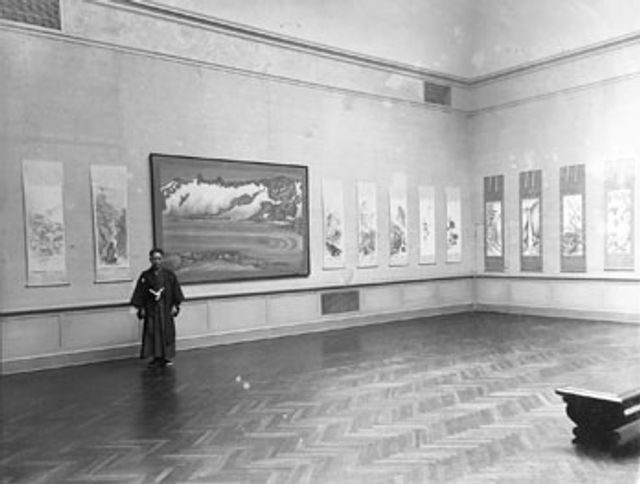Obata’s Yosemite

Chiura Obata, Before Thunderstorm, Tuolumne Meadows, 1930
Chiura Obata (1885 – 1975), born in Okayama-ken, Japan, was one of the earliest Japanese artists to live and work in the United States. He moved to San Francisco in 1903, supporting himself as an illustrator for Japanese language newspapers and magazines, while painting in the moro-tai style of contemporary Japanese art. In 1927, he visited Yosemite National Park and the Sierra Nevada, where he made approximately 100 drawings in pencil, watercolor, and sumi ink. He recalled his visit to Yosemite as “the greatest harvest for my whole life and future in painting.” The following year, he returned to Japan for a visit and brought thirty-five of the drawings to be translated into color woodcuts.
Description
Between 1928 and 1930, while Obata was in Tokyo, he transformed these California landscape watercolors and sketches into a limited-edition portfolio titled World Landscape Series. The final intricate woodblock prints—some required more than 150 separate working proofs—resemble Obata’s watercolors, with lines like brush strokes and areas of delicately layered color. They are characterized by a distinctive merging of Japanese and Western printmaking styles and techniques.
Visiting Information
Tour Schedule
Credit
Obata's Yosemite is organized by the Smithsonian American Art Museum. The exhibition's tour is supported in part by the C.F. Foundation, Atlanta, and the William R. Kenan, Jr. Endowment Fund.
Online Gallery
Tour
The exhibition traveled to the Wichita Falls Museum of Art in Wichita Falls, Texas in 2008 and Federal Hall National Memorial in New York, New York in 2009.
Artists
Chiura Obata (1885-1975) was one of the most significant Japanese American artists working on the West Coast in the last century.














